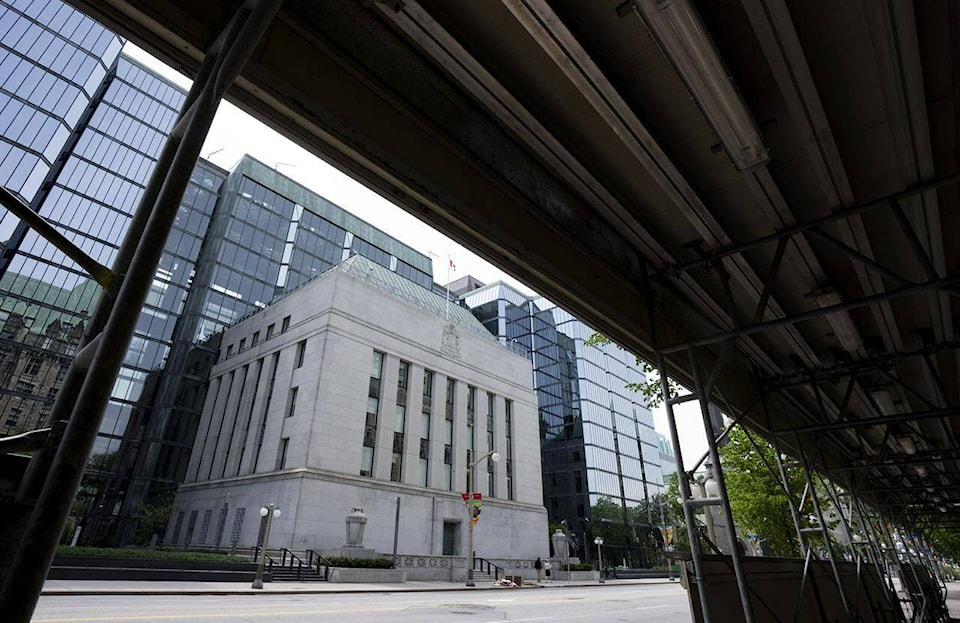~BW Uzelman
The battle with inflation is not over. The Consumer Price Index in May fell to 3.4%, the lowest rate in two years and down a full percentage point from April. That was the good news. The core inflation rate, which removes volatile items, namely food and energy, was at a 3.7% annualized rate in May, down from April by 40 basis points. But it hasn’t been a linear decline. Core inflation has bounced about over the last six months, and has been stickier than the CPI. It will likely track higher than the CPI for some time.
Food inflation, too, has remained stubbornly high at 9% annually, down only 0.1% from April, though energy prices have fallen. Mortgage interest costs rose almost 30%, due to Bank of Canada rate hikes, and rent was up almost 6%. Finally, wage growth remains strong. With all of this in play, most economists have been predicting another rate hike from the Bank of Canada in July or September.
Benjamin Ritzes of BMO Analytics responded, “No matter how you slice it, inflation remains a serious issue for BofC.” He said that there is a bit of good news but, “every inflation metric remains far above the two percent target. Accordingly, Bank of Canada policymakers won’t breathe a big sigh of relief after this report as core inflation remains sticky and has yet to show signs of a durable slowdown.” He also observed that, though chances of a July rate hike, “might be slightly lower now, … a hike still looks likely.”
The Bank of International Settlements supports central banks in their pursuit of monetary and financial stability. Augustin Carstens, the general manager of the bank, authored a piece in the Globe and Mail recently addressing international financial conditions and risks, most of which apply to Canada.
The world is at a critical point, “that could weigh on prosperity for years to come,” says Carstens. “For the first time in decades, we face a combination of high inflation and financial fault lines.” Though he notes there is hope for a soft landing, he (like the Governor of the Bank of Canada) warns inflation could be persistent. Amidst tight job markets, Carstens says, workers could try to recapture their purchasing power lost to inflation, and firms could try to pass on these costs, “creating a vicious cycle”. He adds that asset prices and debt are higher than in past periods of high interest rates, and the downturn could be more severe than expected.
Carstens also warns that these conditions could threaten some banks. His comment applies more to the US and other countries, which have already experienced the collapse of several banks, than to Canada. Banks in Canada are subject to tighter regulation, and are more secure. Instability in the US and elsewhere, however, could impact Canadian banks’ willingness to advance credit, as well as business and consumer confidence here. Carsten believes, “Shaky government coffers cloud the picture further.” Instability, he says, would strain government revenues and increase already high debt levels.
In Canada, loose fiscal policy already creates serious risks. High government spending injects cash into the economy, causing it to be more difficult for the Bank of Canada to rein in inflation. The federal government’s spring budget projected a deficit of $40 billion, but the Liberals continue to regularly add new programs. Seemingly, a week without a new program announcement has been an exception. Confidence in their spending and deficit projections can hardly be firm; the true figures are likely higher.
Provincial governments, in many cases, share the federal government’s big spending habits. Provincial budgetary projections for 2023-2024 range widely. BC, a paragon of fiscal responsibility under former Premier John Horgan, showed the largest projected deficit at $4.1 billion. The highest projected surplus shown was in Alberta at $2.4 billion. The others ranged between those two figures. Provincial governments, to be fair, have faced legitimate need for increased program spending, notably for healthcare. Nonetheless, few provincial governments have demonstrated sufficient restraint.
“In the face of high inflation, a possible recession and surge of revenues,” the Fraser Institute noted earlier this year, “Canadian governments largely chose to increase spending and debt, run deficits and avoid making meaningful tax reductions for families and businesses.”
As for Carstens, he maintains that monetary and fiscal policy are being used too heavily to sustain economic growth. He and the BIC believe monetary and fiscal policy, more appropriately, must be robust, “to help in the fight against inflation and bolster financial resiliency.” In Canada, fiscal responsibility thus far has not prevailed. Inflation and financial instability could persist for some time.
bruce
Bruce W Uzelman
I grew up in Paradise Hill, a village in Northwestern Saskatchewan. I come from a large family. My parents instilled good values, but yet afforded us, my seven siblings and I, much freedom to do the things we wished to do. I spent my early years exploring the hills and forests and fields surrounding the village, a great way to come of age.
I attended the University of Saskatchewan in Saskatoon. I considered studying journalism at one point, but did not ultimately pursue that. However, I obtained a Bachelor of Arts, Advanced with majors in Economics and Political Science in 1982.
Contact: urbangeneral@shaw.ca
Like us on and follow us on .



